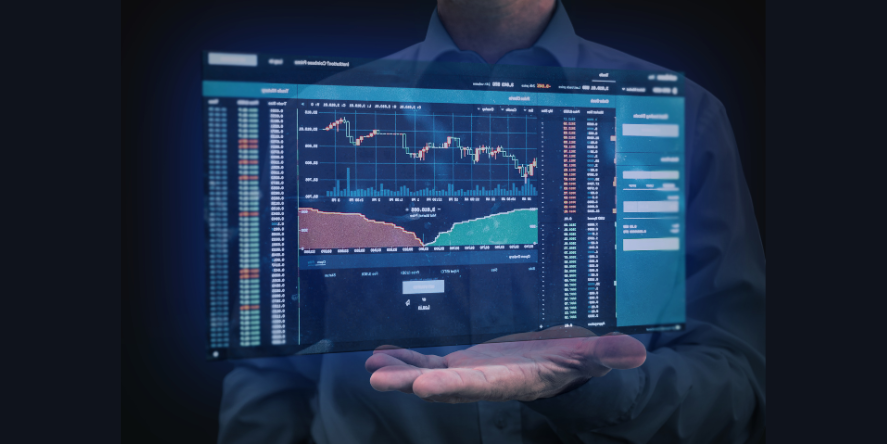Introduced in the 1980s, polymer banknotes were hailed as a revolutionary advancement in currency printing technology. Designed to be more durable and secure, these plastic bills promised a brighter future for global currency systems. However, despite some recent enthusiasm for their adoption in the Middle East, general progress in their widespread implementation has been relatively slow around the world – let’s find out why.
The first plastic banknote was introduced into circulation nearly thirty years ago. Between then and now, the vast majority of countries have changed the designs of their paper currencies and introduced new progressive security features, but only a few of them have decided to adopt plastic – with the EU and the US, the issuers of one of the most popular and widespread currencies in the world, still opting for paper. This unpopularity may seem strange, but only at first glance.
The case for polymer banknotes
The adoption of polymer banknotes has been strongly advocated by certain central banks and plastic banknote manufacturers. Some states even make commemorative plastic notes a “today’s special” for particular events, as Qatar has done: “The commemorative banknotes [polymer 22 Qatari Riyal] for the FIFA World Cup Qatar 2022 constitute an essential contribution from the banking sector and an endeavor to ensure the success of this historic event,” said Qatar Central Bank Governor H E Sheikh Bandar bin Mohammed bin Saoud Al Thani at unveiling commemorative bills for the World Cup.
What are the reasons for the plastic bills proponents? Those security printers are obvious (and not new) – they have invested in production, they expect to recoup their costs and make a profit, and for this reason, they launch active marketing campaigns. The reasons of central banks, on the other hand, are slightly less different: those that introduced the polymer banknote argue that the benefits of the “new” technology and “keeping pace with the rest of the world” outweigh the higher financial, social and ecological costs of the plastic money.
“The new [polymer] banknote features unique technical characteristics to keep pace with global standards and technologies to make the dirham an international currency used worldwide,” commented Khaled Mohamed Balama, Governor of the UAE Central Bank, on the occasion of introducing of the new Dh1,000 polymer banknote. This note has become another one in a series of plastic banknotes introduced in the Middle East, such as Saudi Arabia’s polymer five riyal, Egypt’s new 20-pound polymer bill, and others.

Just like their counterparts around the world, these countries are putting forward the same arguments of security and advancements, but what does “secure” and “advanced” mean in this context? These adjectives refer to new security features that were not present on previous banknotes. There may be many of them, but what is important is not their number or their supposed qualities, but how they perform in real life.
Security features don’t always work
No counterfeiter of sound mind would take his production to a bank. As a rule, fakes enter circulation through the general public, at busy markets, in small retail outlets with dim light,s and so on. No one carries a money checker machine in their pockets, and we normally look for the well-known “Feel, Look, Tilt” elements, like watermarks, colour shift threads, and so on, to check if a bill is genuine. The features are indeed useful, but their number and sophistication cannot guarantee security, as a recent study shows: “Even if a lot of security features are designed and installed on a banknote, they won’t work unless they are noticed by the general public,” the researchers note.
At that, authentication of a banknote takes place in a limited number of cases, for the reasons of generally low public awareness and that the authentication process itself would constitute a socially awkward or uncomfortable situation. To address this problem, the researchers suggest not focusing on the implementation of “new” and “advanced” features, but working on preserving opportunities for practical experience with physical money, distinctive designs, and enhancing banknote authentication by guiding attention to security features: “If banknotes were authenticated more easily, perpetrators may be less inclined to use counterfeit banknotes in the first place,” said Frank van der Horst, Joshua Snell & Jan Theeuwes, a team of researchers from the Netherlands.
Plastic banknotes are prone to counterfeiting, too
It turns out that security does not depend on a banknote’s medium, but on how it is perceived by the general public. Moreover, plastic can even be detrimental to quick verification: for example, detector pens, one of the most popular means of quick counterfeit detection, don’t spot fake polymer bills. The pen reacts to special banknote paper, which, in turn, is available to security printer companies only – unlike the widely offered biaxially oriented polypropylene film for polymer bills. In addition, professional authentication of the latest plastic counterfeits requires appropriate advanced equipment. This places an additional burden on the monetary system and calls into question not only the security of the “advanced” bills but also their economic efficiency (especially since printing plastic banknotes is more expensive).
Cases of plastic banknote counterfeiting around the world only confirm the ease of production and implementation of fakes. Thus, in 2020 Europol discovered an illegal print shop with machinery such as a UV-inkjet printer and cutting devices, and with different tools for counterfeiting. The counterfeits were made on a polymer material and included all security features detectable by the public, making identification almost impossible for non-experts. Australia, which proudly calls its plastic banknotes one the safest in the world, also occasionally faces cases of counterfeiting: for example, a recent fake Australian dollar even has a distinctive transparent stripe like the original notes, is printed on plastic, and does feels similar to genuine notes, admits the local police. And Egyptian criminals went as far as to unfold a preliminary “promotional campaign” to advertise their fakes on social media.
They still pollute
So, facts and studies show that polymer banknotes aren’t more secure than their paper counterparts. Why, then, do some banks continue to promote and use them? The second most-cited (and perhaps the last) “advantage” is their “environmental friendliness” due to their extended use and recyclability: “When no longer useable due to wear and tear, polymer banknotes can be recycled into various products, such as building components and plumbing fittings,” says Benjamin Diokno, Governor of the Philippines Central Bank.
The plastic bills evangelists don’t like to answer the question of where the polymer will go after the items made from recycled banknotes have served their time – for obvious reasons. The plastic may eventually end up in nature, where it will stay for thousands of years (unlike paper). Even state representatives of the countries with plastic currency admit this: “When we look at the sustainability picture, we always have to take different factors into concern. It may use less water, and may have a smaller carbon footprint, but it will not biodegrade. It will still be there and it is a product we created and will stay there forever, as opposed to abaca and cotton,” argues Philippine Senator Pia Cayetano.
Also, there’s one more fact that offers little room for optimism: plastic banknotes will end up in the landfill much sooner than expected. They require careful handling for them to serve longer, which is almost impossible in real life: polymer banknotes cannot be washed, heated, and folded, to name a few “forbidden” actions. Among other things, people value cash for its convenience of use, which turns out to be questionable, as in the case of economic viability and security. Ultimately, these factors raise doubts about the polymer banknotes’ ability to deliver on the promises initially made. As the industry evolves, it remains to be seen if polymer banknotes can overcome these obstacles and secure a more prominent role in global currency systems.
Article/Blog Received On Mail















